Common Tree Diseases in Texas and How to Treat Them
By Innovation Grounds
Texas, with its vast and varied landscapes, is home to a wide range of tree species. From the pine forests of East Texas to the desert landscapes of West Texas, trees provide not only aesthetic value but also crucial environmental benefits. However, trees are susceptible to a range of diseases that can weaken or kill them. Understanding these diseases and how to treat them is vital for any tree owner in Texas.
In this blog post, we’ll explore some of the most common tree diseases in Texas, their symptoms, and effective treatment options to help keep your trees healthy.
Oak Wilt
Symptoms: Oak Wilt is one of the most serious and widespread tree diseases in Texas, affecting oak trees, particularly live oaks and red oaks. The disease causes leaves to wilt, turn brown, and fall prematurely. A distinctive pattern of veins turning brown can often be seen in the affected leaves. Trees infected with Oak Wilt may die within a few weeks to several months.
Causes: Oak Wilt is caused by a fungal pathogen called Bretziella fagacearum, which spreads through root grafts between nearby trees or by beetles carrying the fungus from tree to tree.
Treatment: Preventing the spread of Oak Wilt is crucial. Pruning oaks during the dormant season (typically in winter) and avoiding cuts during the growing season can reduce the risk of infection. Chemical treatments, like injecting trees with fungicides, can help protect healthy trees in high-risk areas. If a tree is already infected, it’s often best to remove it to prevent the fungus from spreading to neighboring trees.
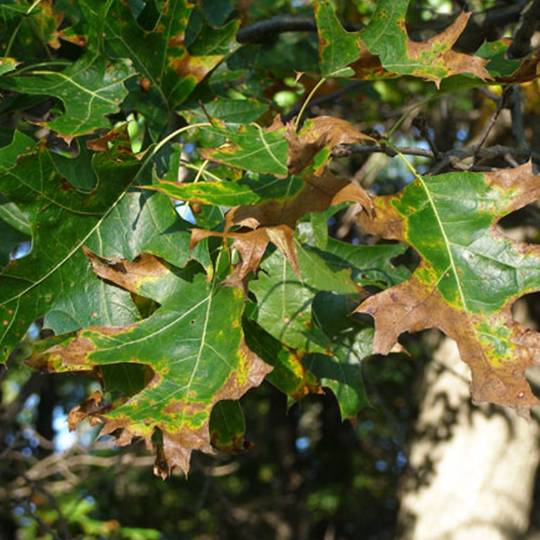
Pine Bark Beetles
Symptoms: Pine bark beetles are a significant threat to pine trees in Texas, causing needles to turn yellow or brown and eventually fall off. You may also see small holes in the bark or sawdust around the base of the tree, which are indicators of beetle activity.
Causes: Pine bark beetles, such as the Southern Pine Beetle (Dendroctonus frontalis), attack weakened or stressed pine trees. These beetles burrow under the bark, where they lay eggs, and the larvae feed on the tree’s cambium layer, cutting off nutrient flow.
Treatment: The best treatment for pine bark beetle infestations is prevention. Regularly inspect your pine trees for signs of stress, such as poor growth or yellowing needles. If you find an infestation, affected trees should be removed and destroyed. Insecticides can be applied to healthy trees to deter beetles, especially in areas with high beetle activity.
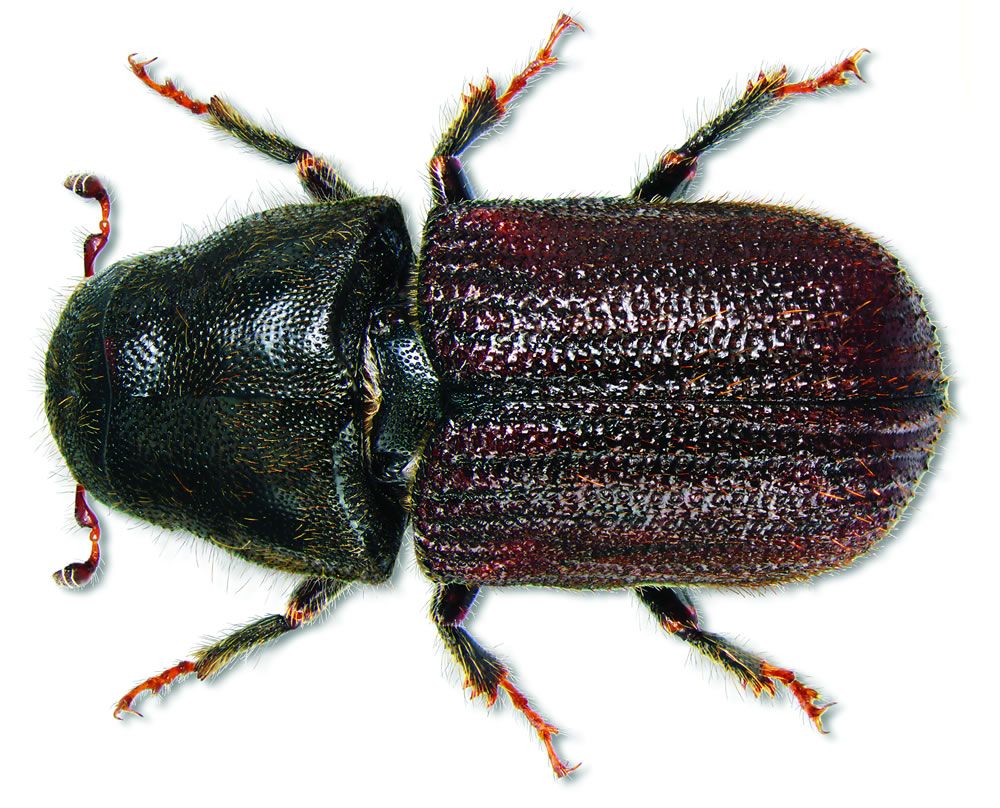
Anthracnose on Sycamore Trees
Symptoms: Anthracnose is a fungal disease that affects a wide variety of trees, including sycamores, which are common in Texas. Symptoms include dark, sunken lesions on leaves, with the edges often curling or withering. As the disease progresses, entire branches may defoliate, leaving the tree vulnerable to other stressors.
Causes: The disease is caused by the fungus Apiognomonia veneta, which thrives in cool, wet spring weather. It spreads through spores in rain or wind.
Treatment: Pruning infected branches and removing fallen leaves can help reduce the spread of Anthracnose. Fungicide applications are most effective when used preventatively during the early spring. Keeping the tree healthy by watering it properly and avoiding over-fertilization can help it resist infection.
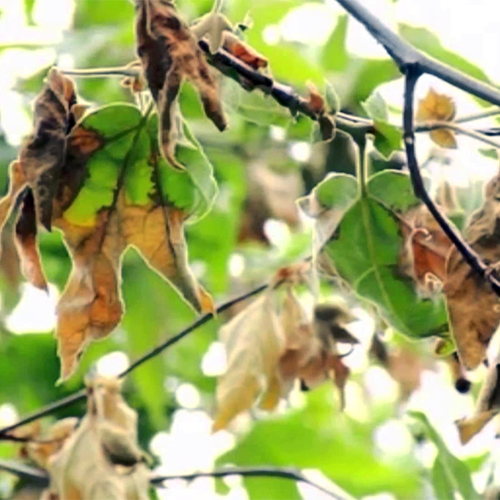
Cedar-Apple Rust
Symptoms: Cedar-apple rust affects trees like junipers (cedars) and apple trees. It causes orange or yellow lesions to appear on the leaves and fruit of apple trees. On junipers, the disease produces large, jelly-like galls that can be seen on branches and twigs.
Causes: This fungal disease is caused by Gymnosporangium juniper-virginianae and requires two hosts to complete its life cycle: junipers and apple or related trees (like pears and quinces). It is most prevalent in the spring, when wet conditions promote spore development.
Treatment: To manage cedar-apple rust, remove any infected apple or juniper trees in proximity to each other. Fungicides can also be applied to apple trees in the spring before new growth appears. For severe cases, consider replacing susceptible trees with resistant varieties.
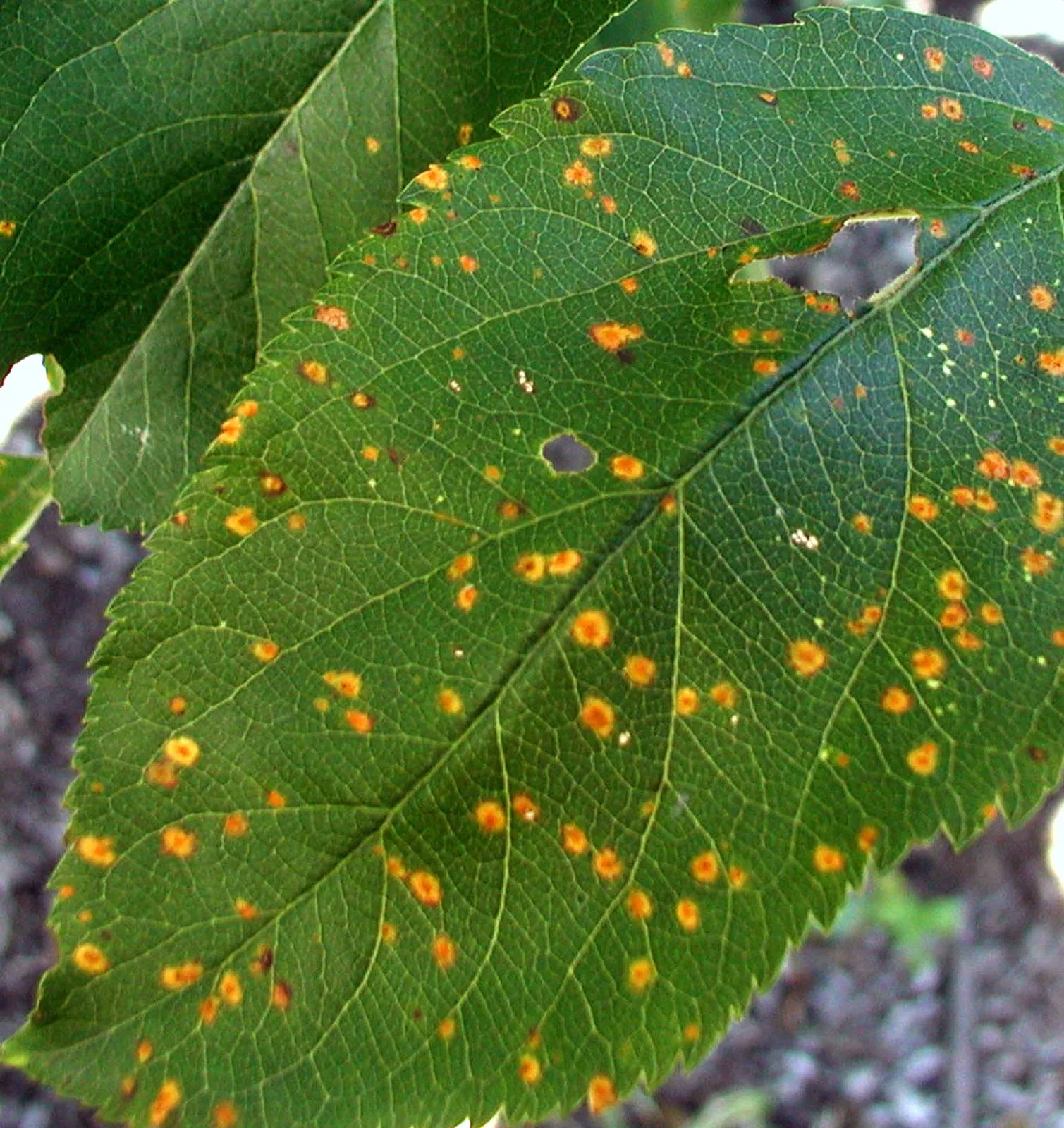
Leaf Spot Diseases
Symptoms: Leaf spot diseases are common in various tree species across Texas, including maples, oaks, and elms. These diseases cause small, dark spots on leaves, often surrounded by yellow halos. Over time, the affected leaves may drop prematurely, which can weaken the tree.
Causes: Leaf spot diseases are caused by several fungi, including Cercospora and Phyllosticta. These fungi thrive in humid and wet conditions and spread rapidly through rain, wind, or infected plant debris.
Treatment: The key to controlling leaf spot diseases is proper sanitation. Remove fallen leaves and prune any infected branches. Fungicides can be applied to trees during the early stages of infection, but they are most effective when used preventatively. Ensure your trees are well-watered and not stressed to help them recover more easily.
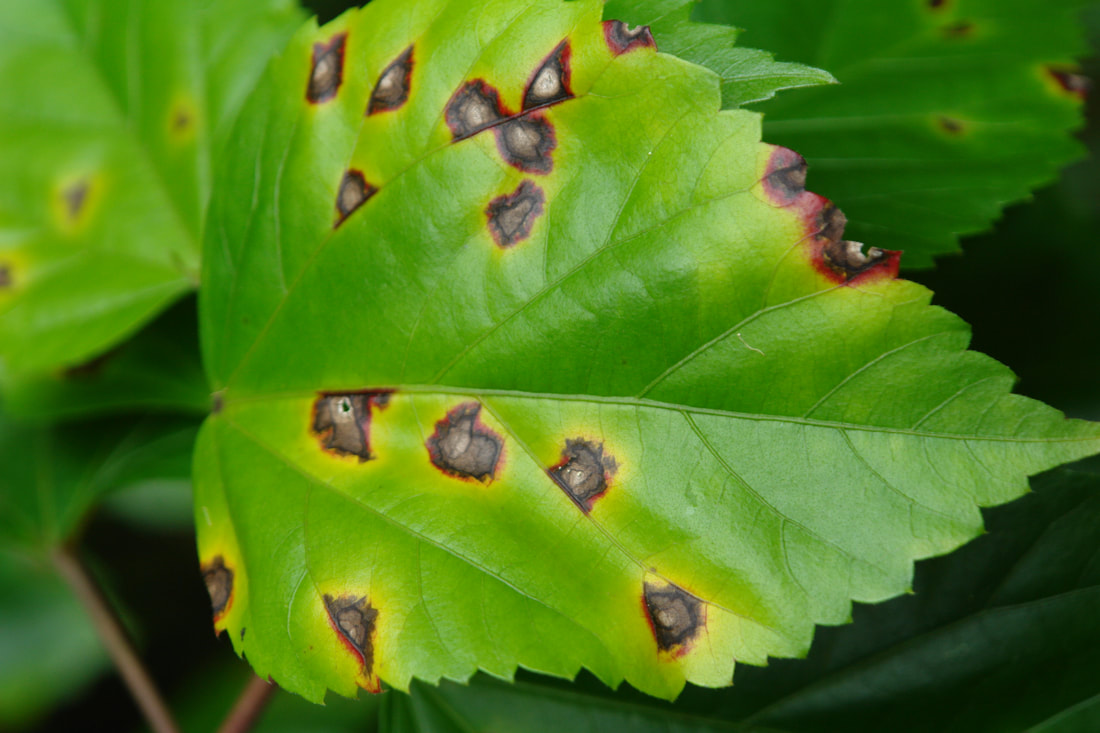
Conclusion
Texas is home to a wide variety of trees, and with the right care and maintenance, you can help your trees thrive and remain disease-free. Understanding the common tree diseases that affect the region, such as Oak Wilt, Pine Bark Beetles, and Anthracnose, is the first step in ensuring your trees remain healthy.
Preventive measures like proper pruning, avoiding over-watering, and using fungicides or insecticides when necessary can help protect your trees from these diseases. Regularly inspecting your trees and maintaining good tree health practices will go a long way in keeping them safe from harm.
If you suspect your trees are infected with a disease, it’s essential to consult a professional arborist for proper diagnosis and treatment. With the right knowledge and action, you can help preserve the beauty and health of your trees for generations to come.


